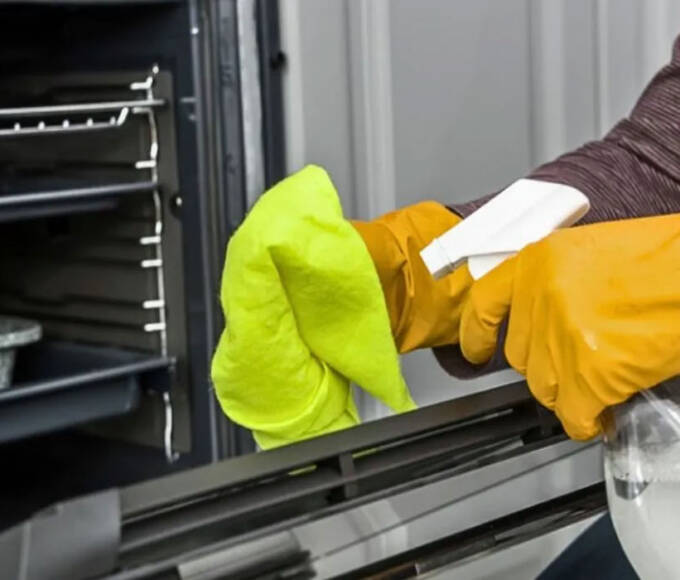Routine care and upkeep of stainless steel ensures your kitchen sink keeps it looking sleek and shiny. While you might believe the steel basin would be high maintenance, the care is simpler than most expect.
Still, it would help if you were consistent with disinfecting and cleaning to avoid dulling or the possibility of rust developing. When remodelling, homeowners don’t often consider a kitchen sink a focal point in the room. It should be stylish, functional, and, with stainless, always sparkling.
How Can You Keep Your Stainless Kitchen Sink Looking Sleek and Stylish
A stainless-steel kitchen sink can be a stylish addition to any design scheme, whether traditional or contemporary. These come in many styles, from inlay to farmhouse and everything in between.
When renovating, the decision on which to choose must be made carefully, as the sink is a principal component of the kitchen. Because of that, the steel material needs to be cared for routinely to maintain that vibrant shine. It can become dull and even develop rust when neglected.
Get tips on how to choose the ideal kitchen sink at https://www.decoist.com/how-to-choose-the-right-kitchen-sink/. Then follow here for tips on maintaining the cleanliness of a stainless-steel kitchen sink to keep it looking like new.
The bottom grid can help prevent scratches
Stainless steel boasts incredible durability, making it a favoured material for kitchen sinks. The downside is it can scratch with the potential for chemical solutions and food particles to stick to the surface, creating rust and corrosion.
While many homeowners choose to line the bottom with a rubber mat, this can trap particles beneath it. Instead, a metal grid will keep water moving into the drain. This can also protect the sink from scratches, allowing it to stay in a like-new condition.
Consistent cleaning
Water stains or spots should be avoided to prevent the material from dulling or becoming corroded. That means wiping down the steel following each use to keep the water from drying into stains. Frequent cleaning is important to ensure no food particles or soaps remain on the surface.
While it might seem that the material requires quite a bit of maintenance, it is relatively simple and can be finished while finishing after a meal.
Vinegar helps with staining
Stainless steel responds well to vinegar as a natural cleanser, which most people already have in their cupboards. Once you finish washing up after the evening meal, a vinegar rinse will cleanse the steel. It is essential to wipe the sink out, rinse it, and dry it.
This could be a daily cleanse. Again, maintenance with minimal effort after doing the routine evening chores. The result will be a brilliant sheen you cannot achieve with many commercial chemical solutions.
Another natural cleaning solution is a baking soda paste that will help with tough staining in the steel sink. To make the making the paste:
- Combine three tablespoons of water with ½ cup baking soda, blending to create a thick paste.
- When cleaning with the paste, it should be applied with a soft sponge or cloth and then followed with vinegar for extra cleansing. This will make a fizz that polishes the steel. You can then dry the sink with a clean cloth.
Try club soda
Club soda works wonders on the material, another natural household staple that can help make stainless steel shine. It does not take much. The directions advise blocking the drain before putting only enough for the sink base.
The substance should be spread throughout the sink with a soft cloth to clean the entire basin. The club soda should be rinsed, and the sink should be dried with a clean cloth.

Microfiber works for water spots
Water spots invariably happen despite consistent efforts. These can be worked out with lint-free, soft towels like a microfiber cloth to polish the steel. The water spots can be readily buffed out with the cloth to return the material’s natural sheen.
Wash up
Stainless sinks are not ones where you want to leave dishes overnight, nor should you allow food to sit in the basin. If you want to avoid chores for the evening, do not keep the dishes in the sink; instead, sit them on the counter or island and take care of leftovers or scraps right away.
The sink should still be rinsed and wiped out despite not being washed to prevent staining or spotting after food prep and cooking.
Use a scouring pad for cleaning
A soft scouring pad can gently clean the surface when there is a tough, stuck-on mess in the basin that will not budge with natural cleansers or other solutions. Avoid harsh scrubbing to prevent scratching the stainless steel.
The recommendation is to work the sponge in the grain’s direction until the particles loosen. After removing the stubborn particles, the basin should be rinsed and thoroughly dried.
Wire brushes and steel wool are typically used when scrubbing basins, but these tools are unsuitable with steel sinks due to the chance of scratching the surface. They can also create an iron residue that could rust the basin.
Try olive oil
If you follow all the steps but the sink appears dull, apply olive oil to a soft cloth to bring out the shine. The basin should be dry and clean when buffing it. It only takes a few drops on the cloth to refresh the sparkle.
Final Thought
The stainless-steel sink is among the favoured choices in kitchen sinks, with it being at home in any design aesthetic. It can work in a traditional space, contemporary, minimalist kitchen, and more. Go here for other kitchen sink styles.
While some might hesitate to choose this option, believing the maintenance might be too much, it is relatively simple and quick. It can be done following the evening meal, mostly with staples kept in the kitchen cupboard and a soft cloth.
This sink is functional and stylish, requiring minimal effort to maintain that sleek appearance.








